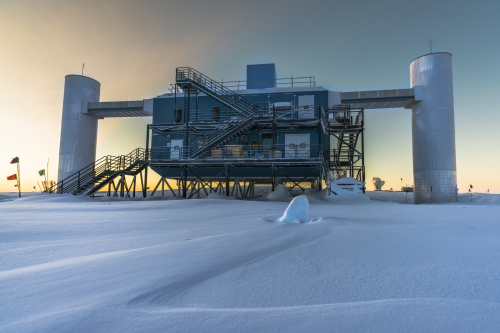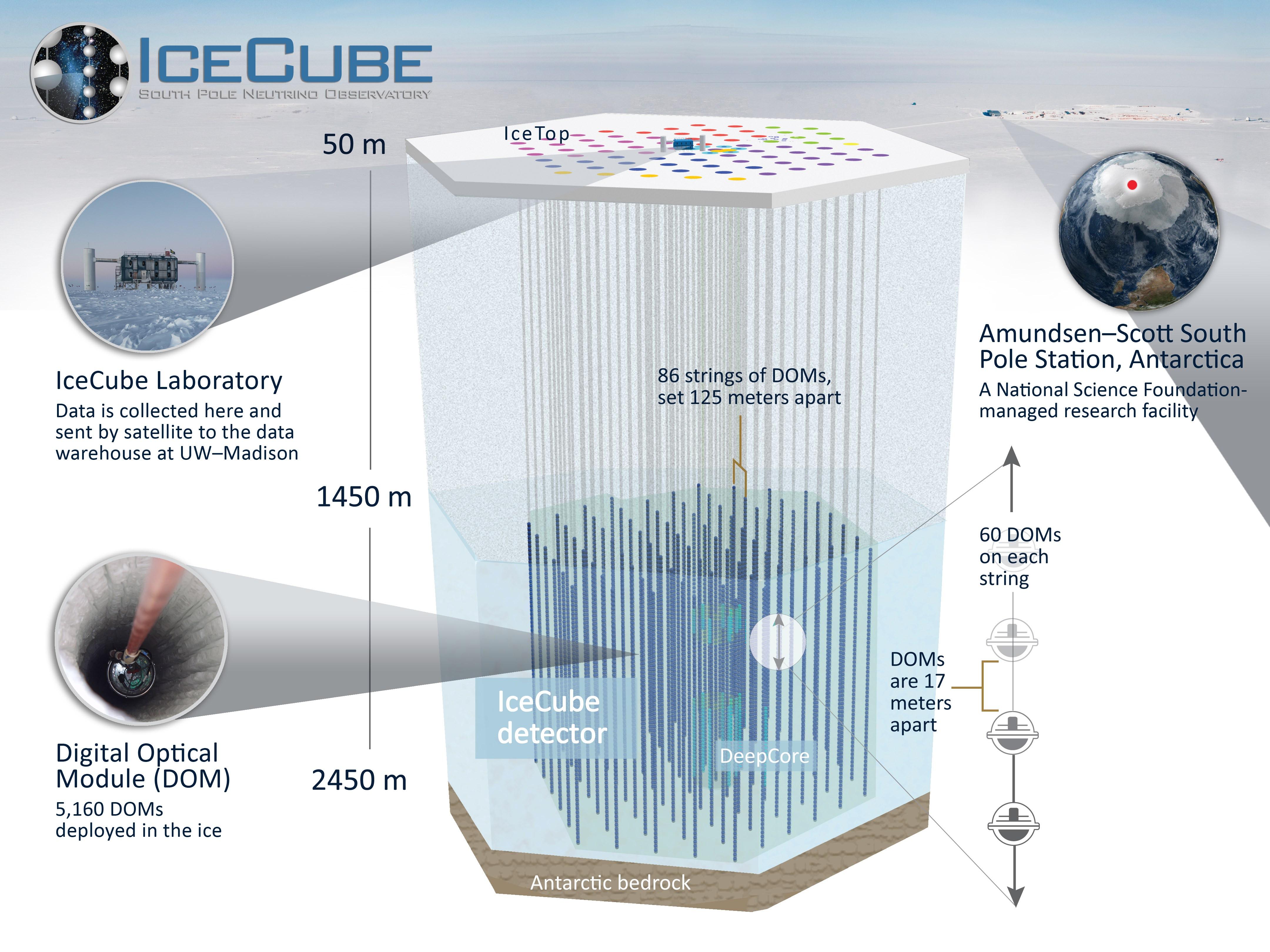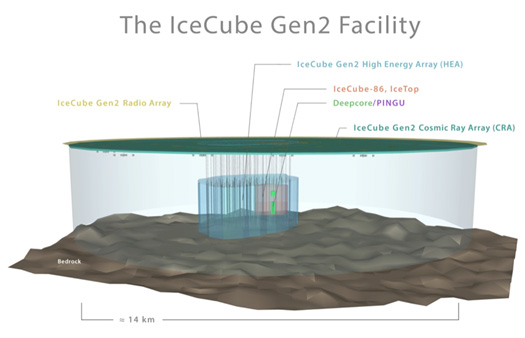 In this overview we want to introduce the IceCube Neutrino Observatory. In part I we focus on the input of KIT and DESY for the developments of SiPM-readout scintillation detectors for an extended surface array of IceCube and IceCube-Gen2. in part II we show the developments of optical sensors for the IceCube Upgrade.
In this overview we want to introduce the IceCube Neutrino Observatory. In part I we focus on the input of KIT and DESY for the developments of SiPM-readout scintillation detectors for an extended surface array of IceCube and IceCube-Gen2. in part II we show the developments of optical sensors for the IceCube Upgrade.
IceCube is a unique detector, not only due to the discovery of very high energy cosmic neutrinos, but also as a multipurpose research facility. It also contributes to cosmic ray physics, dark matter searches and glaciology, and is therefore most suitable for multi-messenger astroparticle physics.
IceCube Neutrino Observatory
The IceCube Neutrino Observatory is located at the South Pole to observe the cosmos using optical modules deep in the ice and ice Cherenkov tanks at the surface (IceTop).

IceCube Lab at sunset
(Credit: Martin Wolf, IceCube/NSF)
With 5160 digital optical modules, deployed in a cubic kilometre of ancient ice at 1450 m to2450 m depth, this in-ice component measures Cherenkov light generated by neutrino induced particles in the TeV energy range. The optical modules are employed with a ten-inch photomultiplier and corresponding electronics. 60 optical modules form one string and in total 86 strings are deployed.
The DeepCore subdetector with denser configuration lowers the energy threshold to 10 GeV and allows the investigation of neutrino oscillations.
IceTop acts as a veto and calibration detector for IceCube and is additionally used as a cosmic ray particle detector in an energy range from 300 TeV to 1 EeV.

IceCube detector schematic
(Credit: IceCube Collaboration)
A collection of science highlights in the different fields can be found on: http://icecube.wisc.edu/science/highlights
Further information about the IceCube Neutrino Observatory is available at their website: http://icecube.wisc.edu/
IceCube-Gen2
Due to the excellent performance of the detector and the discovery of the astrophysical neutrinos the idea of a next-generation Neutrino Observatory was natural. The new IceCube-Gen2 collaboration is currently exploring the capabilities of such a detector.

IceCube-Gen2
(Credit: IceCube collaboration)
The future IceCube detector shall deliver statistically significant samples of very high energy astrophysical neutrinos, in the PeV to EeV range, and detect hundreds of neutrinos across all flavors at energies above 100 TeV. It includes the dense array PINGU, but also a radio enhancement like ARA is considered for detecting neutrinos above EeV. In addition, the in-ice instrumentation shall be complemented by a large-area surface component for veto issues and cosmic ray measurements.
IceCube-Gen2 is presented in more detail here: http://icecube.wisc.edu/science/beyond
At the moment several R&D projects are going on and in Part I we focus on the work of KIT and DESY on a future scintillator surface array and on Part II we show the developments of optical sensors for the IceCube Upgrade.
Text and pictures on "IceCube Observatory" from their website http://icecube.wisc.edu/
